by Heather Plett | Jun 11, 2013 | Uncategorized
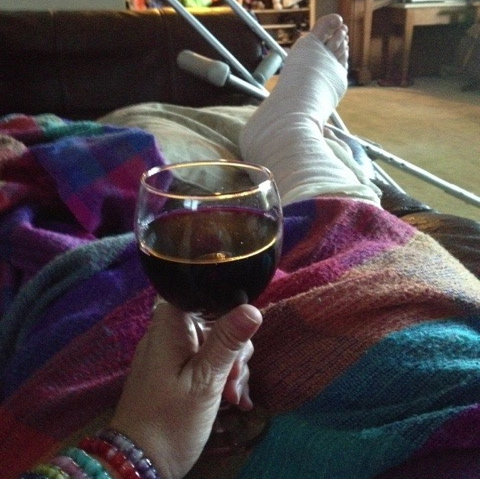
Saturday was going to be a perfect day. I didn’t have much planned, so I could get some of my long overdue cleaning done, and then enjoy the irresistible Spring weather with a bike ride, a wander in the woods – maybe even a trip to the zoo. Maddy was vying for ice cream. It was going to be full of ease and fun, mixed in with a little bit of cleaning.
Saturday turned out to be a far-from-perfect day. After deciding it would be best to start the day with a bike ride, Maddy and I headed to the garage for our bikes. I never made it to my bike. At the bottom step into the garage, my ankle collapsed (I think I stepped on the edge of something on the floor), my foot hit the floor at a weird angle, and I was suddenly face to face with the concrete, writhing in pain.
A few hours later, after the pain got increasingly worse, an emergency room practitioner told me that I’d broken a bone in my foot. I limped back out into that irresistible Spring weather on crutches and in a cast. No bike ride, no wandering in the woods, no trip to the zoo.
It got worse. That evening, limping into the bathroom, I suddenly felt very dizzy. “I think I might pass out,” I shouted to my husband, and then woke up on the floor, my face next to the toilet.
It got worse. My husband and daughter got me onto the toilet, and then the vomiting started. And more passing out. And more vomiting. (This is not new – when I vomit, I usually pass out at least once. Nobody knows why.) In between the vomiting and passing out was the weeping and extreme self-pity. “Why is this shit happening to me?” I wailed. I suspect I got food poisoning from the creamy coleslaw my husband picked up at the grocery store.
I’d like to say I’ve been in a perfectly good place since then – that I came to terms with the injury, put it into perspective, and cheerfully adapted my life around this inconvenience. Because I’m just that evolved. That would be a lie.
Sure, there have been moments when I’ve had a remarkably good attitude, when I tell people “I guess the universe thought I should sit down for awhile,” or “just when I was teaching a lesson on surrender for my Lead with Your Wild Heart program, I got a bonus lesson myself,” or “perhaps this will be a good time to work on my book, since I can’t do much more than sit.”
But there have been lots of moments in between those good-attitude-moments when waves of self-pity wash over me. “Isn’t it enough that my mom died and my husband had a heart attack in the last six months – do I really need ANOTHER challenge in my life?” or “Doesn’t God know that I really, really need those Springtime walks in the woods to help heal me from an extremely tough winter? How can this be fair?” or “I have two trips, half a dozen classes and workshops to teach, AND my annual visit to the Folk Festival coming up in the next month and a half – how the hell am I supposed to do all of those things on crutches?!?” or “I just want to phone my Mom and let her feel sorry for me for awhile. It is so FUCKING unfair that I can’t phone my Mom anymore!”
The waves come and the waves go, and I try to weather them all. Self-pitying-whiny-woman, super-spiritual-accepting-woman, angry-bitter-why-me-woman, stoic-and-determined-not-to-let-this-get-the-better-of-me-woman – all of those people reside in my head, along with a few of their friends.
Here I am, sitting in the middle of all of that, trying to find the simplicity in the complexity of these voices, trying to be okay with what shows up, and trying to extend grace to every version of myself as she appears.
This is my practice.
Telling super-spiritual-accepting-woman that she doesn’t need to make so much effort to find the path straight to the deeper learning. And when she retorts with “But… I’m a TEACHER! Teachers are supposed to be wise and find lessons in things and…” simply smiling and telling her that it’s okay, the learning can wait.
Holding the hand of stoic-and-determined-not-to-let-this-get-the-better-of-me-woman while she tries to figure out a way to prove to the world that she is superwoman and can still cook supper, teach her classes, and accomplish great things, and letting her sink into her weakness for awhile instead. “It’s okay – your husband and kids are perfectly capable of fixing supper and doing the laundry. And – just look at that! They’re doing it willingly!”
Choosing not to beat up on self-pitying-whiny-woman when she needs to feel sorry for herself, but just letting the tears flow for awhile, observing the hurt that is behind them. “You’re human – you’re allowed to have human emotions.” While she cries, just trying to be the compassionate mother I would be to my own children, or that my mother would be to me if she were here.
Biting my tongue against the platitudes that are intended to fix angry-bitter-why-me-woman, like, “it could be so much worse – you could have broken BOTH feet!” and “what right do you have to complain about First World problems when people are starving?”, but rather letting the waves of anger pass and extending kindness to her in the moment. “Fixing” usually turns out to be more like “putting a bandaid on a wound that needs air”.
This is my practice.
Being present for what is.
Simply noticing the emotions – the hurt, the anger, the frustration, and the sadness – and letting it all pass.
Letting the healing and beauty show up in little moments – the way the light makes the leaves outside my window glow – instead of desperately clinging to my need to walk in the woods.
Welcoming gratitude when it comes. Like when my daughters willingly show up with food or help pick me up off the floor.
Extending grace to myself, again and again.
Letting people help me.
Letting myself be wounded.
Letting my heart feel broken.
Letting myself be healed.
Seeking patience, one little moment at a time.
Seeking acceptance of who I am.
Inviting myself to keep learning.
This is my practice.
There’s a good reason why it’s called “practice”. It doesn’t come all at once. It comes only as I commit to it, again and again, and start over again each time I fail.
This morning I failed. I cried. And it was what it was.
This is my practice.
by Heather Plett | Jun 6, 2013 | Uncategorized
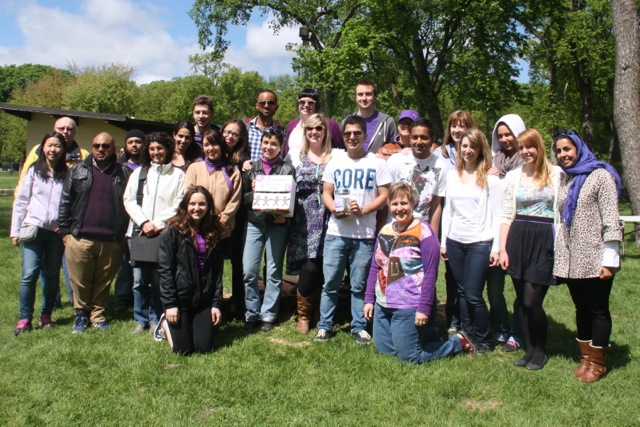
Standing in the park on Saturday, surrounded by my students after the Stand Up Super Games, I got a little choked up. I was immensely proud of this great group of students who’d pulled together, despite some of the rough spots they’d been through, to create a great event for a good cause.
Yes, the students had initiated the event because their assignment in the PR class I teach is to create some kind of PR campaign, but the energy they put into organizing it and fundraising for Osborne House showed that it had become so much more than an assignment; it had become a cause. Most of them showed up in that park not just because they wanted to pass the course, but because they cared for the women taking shelter at Osborne House due to domestic violence.
In showing up for a cause that they care about, my students were demonstrating that they are citizens of the world and they are doing their part in trying to make it better.
In his book, The Abundant Community, Peter Block talks about the difference between citizens and consumers.
“A citizen is one who is a participant in a democracy, regardless of their legal status. It is one who chooses to create the life, the neighbourhood, the world from their own gifts and the gifts of others. A consumer is one who has surrendered to others the power to provide what is essential for a full and satisfied life. This act of surrender goes by many names: client, patient, student, audience, fan, shopper.”
Sadly, there is a tendency in our culture to forget what it means to be citizens and to focus instead on our rights and entitlement as consumers. A recent news story about a man who refuses to mow the lawn on the boulevard in front of his home demonstrates that tendency. He believes it is “the city’s” responsibility to mow that piece of grass, forgetting that “the city” is each and every one of us who live here and that we all have responsibility to care for the place in which we live.
This man is not alone in his sense of entitlement and lack of commitment to the world around him. How often have you heard people complaining about the government, when they do very little to lobby the government for change and often don’t even vote? How often have we ignored the fact that our neighbours may be struggling with poverty or oppression because it’s “not our problem”? How many times do we ignore the damage being done to our earth because we assume we deserve the creature comforts that are produced from the earth’s limited resources?
As a friend living in Haiti reminded me on Facebook this morning when I ranted about this issue, this is the “tragedy of the full belly”. When we have too much, we expect too much. When we become self-reliant, we assume we don’t need other people and that they don’t need us. We stop contributing to our communities because we can get along just fine without them. And when we stop being community-minded, it becomes less and less important how our actions impact the people around us.
That’s why I got emotional when I was standing with my students in the park. In showing up for this campaign, they demonstrated that they haven’t forgotten about the need to contribute to their community. They’re willing to step out of their own comfort zones, forget about their own entitlements, and serve a cause that is bigger than them. This is what we need to foster more of in our schools and work places. This is leadership.
Meg Wheatley defines a leader as “anyone who is willing to show up and help”. Leaders, in other words, are those people who remember their citizenship and are willing to be part of a larger community. The students who contributed to the Stand Up Winnipeg campaign are willing to stand up and be leaders.
The more I do this work, the more I feel passionate about the need for us to stop being so focused on ourselves and our entitlements and start serving as citizens and stewards of the world. That’s why I’m so excited about the three upcoming events I’ll be co-hosting this summer.
On July 6, I’ll be in Ontario co-hosting Ignite: A day of retreat for women sparking change. On July 24, I’ll be in Winnipeg co-hosting The Art of Hosting and Harvesting Conversations that Matter. And then on August 1-4, I’ll be in Asheville, North Carolina, co-hosting Engage! A retreat for women with love in their hearts and fire in their veins.
All of these events are designed for people, like my students, who want to stand up and be counted, people who are willing to be citizens of the world, people who understand that communities thrive when each person shows up and makes a contribution.
These events are not about the old understanding of the leader as a hero, they are about a new understanding of the leader as a host. A host shows up and makes people feel comfortable. S/he engages people in meaningful conversation. S/he makes sure there is good food to eat. S/he is a steward of the place in which she lives. S/he builds community, not from the front of the room but from a place in the circle.
STAND UP now, and let’s make the world a better place.
by Heather Plett | May 28, 2013 | Uncategorized
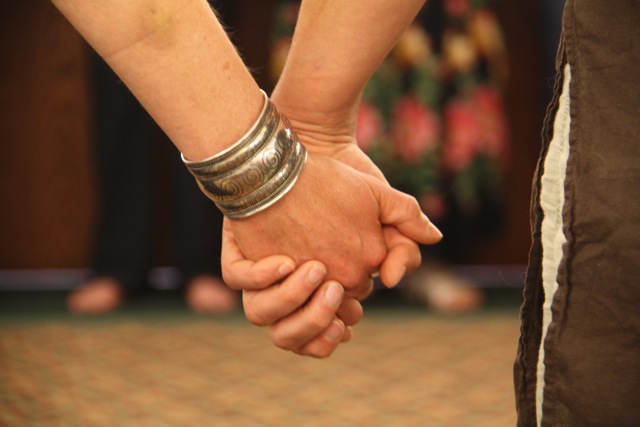
“I can’t imagine one single thing that could have improved upon this day.“ That was my Facebook status on the second day of the women’s leadership retreat I co-hosted this past weekend. Yes, it really was that good.
If you had asked me, three years ago when I was dreaming up my self-employment, what my perfect work would be, I would have described a weekend like this one. “Hosting a group of women in a beautiful place while we explore – independently and collectively – how we can use our gifts to make the world a better place,” is what I might have said, and that’s what I did this weekend. I am grateful for UNPAC, the organization on whose behalf I organized the retreat and was able to make it available to rural women in Manitoba.
What were the elements of this weekend that made it work? I don’t usually write “how to” posts, because they seem a little too simplistic for the depth of this work, but here’s a list of things that I believe are important elements for a retreat like the one I just hosted.
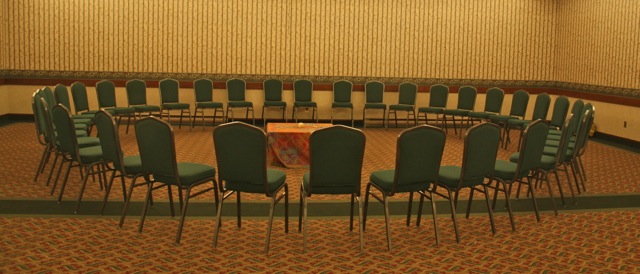 1. Start and end with a circle (and throw a little circle in the middle for good measure). This has become imperative in my work. A retreat like this has to include meaningful conversations and spaces for intimate relationships to happen. Those things don’t happen very easily in straight rows of chairs. At the start of the retreat, we gathered everyone into a large circle and one by one we shared the stories of what had brought us to that place. It’s a beautiful way to set the stage for the rest of the gathering. From the very start, this group of women was a community, and that happened because they spent the first evening looking into each other’s eyes.
1. Start and end with a circle (and throw a little circle in the middle for good measure). This has become imperative in my work. A retreat like this has to include meaningful conversations and spaces for intimate relationships to happen. Those things don’t happen very easily in straight rows of chairs. At the start of the retreat, we gathered everyone into a large circle and one by one we shared the stories of what had brought us to that place. It’s a beautiful way to set the stage for the rest of the gathering. From the very start, this group of women was a community, and that happened because they spent the first evening looking into each other’s eyes.
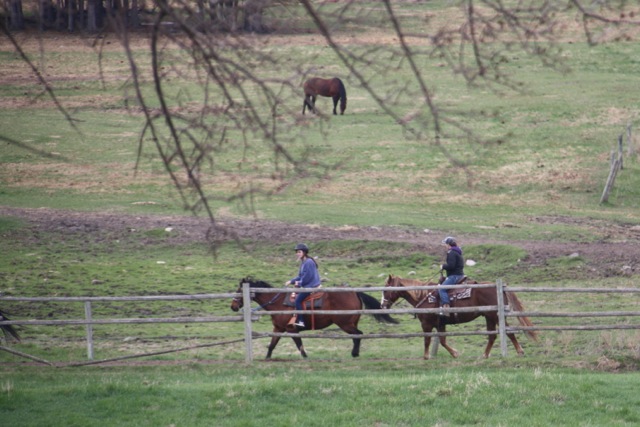
2. Gather in a beautiful place where you can connect with nature. There’s a very different energy that shows up when you meet in a space where nature is just outside the front door. Nature grounds us and makes us feel more deeply connected. I once tried to plan a retreat in a downtown hotel, and I had to cancel the plans (and do a lot of scrambling for alternate arrangements) because I had to trust my gut feeling that the space just wasn’t conducive to the kind of intimacy and connection I wanted to host. As a host who gives a lot of her energy away in a retreat (and even when I’m a participant), I know that I have to find opportunities to wander in nature in between sessions or I have a hard time staying present and awake. This past weekend, I found an hour to wander in the woods and was delighted when I came across a beaver munching on a twig at the edge of a marsh. I later learned that a beaver totem represents the building of community.
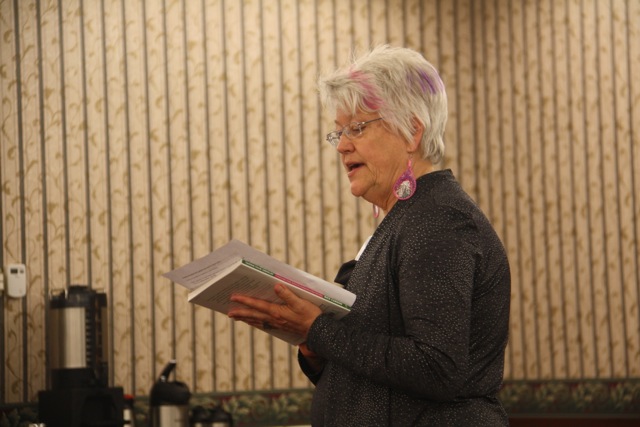
3. Give participants opportunities to share their gifts. Because this was a retreat meant to foster leadership in the participants, we invited the women to make offerings to the group in whatever their giftedness was. On Saturday afternoon, we had a series of 10 minute talks given by anyone who had interesting ideas or projects they wanted to share, and then we had three simultaneous creative workshops where participants introduced other participants to new skills and ideas such as painting, creative writing, and The Way of the Heart. In addition, we had a laughter yoga session, an Irish dancing session in the parking lot, a drum circle, and offerings of reiki, energy healing, poetry, etc – all generously offered by retreat participants. Not only did it make the retreat more interesting and fun to include these things, it gave those making the offerings a safe place to practice some of the things they love to teach or do for other people. The fact that everyone’s gifts were accepted and valued strengthened the sense of community at the gathering.
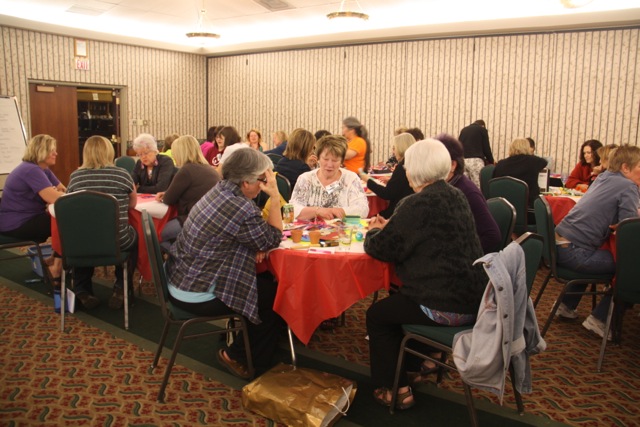
4. Share the hosting responsibilities. The more I learn about community and the Art of Hosting, the more I recognize the importance of having more than one host for a gathering such as this one. When there is only one host or one person who’s seen as the “expert” in the room, then not only does that person have to carry a lot of weight on their shoulders, but there is much more risk of the ego getting in the way There is also less of a chance that genuine community will be formed. A single person (especially one who’s seen as the expert) at the top is a hierarchical model that makes participants feel like their own wisdom is less valued and they are therefore less inclined to bring their own gifts to the gathering. In addition, that single person can begin to feel that whatever goes right or wrong is their responsibility. Finding someone with whom you are comfortable working and who is practiced at keeping their ego out of their work is priceless. I was grateful to work with my colleague Lori at this retreat.
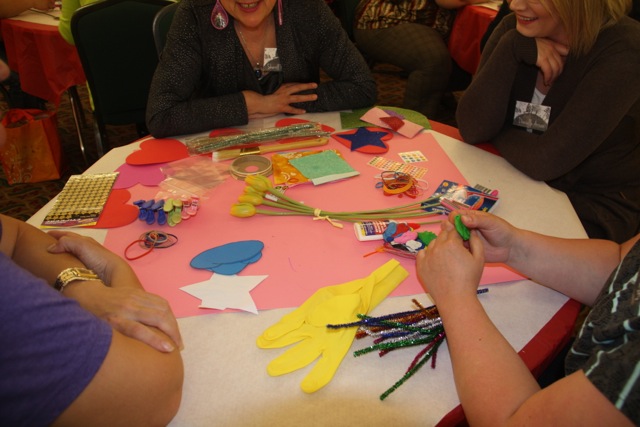
5. Take a holistic approach to creating variety in the itinerary. We all learn and engage differently, and so it is critical to bring in a variety of ways of engaging with the content of the retreat. We spent a lot of time in circle and small group sessions, but we also watched a couple of videos, did a hands-on creative expression workshop in which we built community out of random materials, spent some quiet time journaling, etc. We also made sure there was time for body engagement through laughter yoga and Irish dancing. And in the evening, we gathered around the fire for laughter and storytelling.
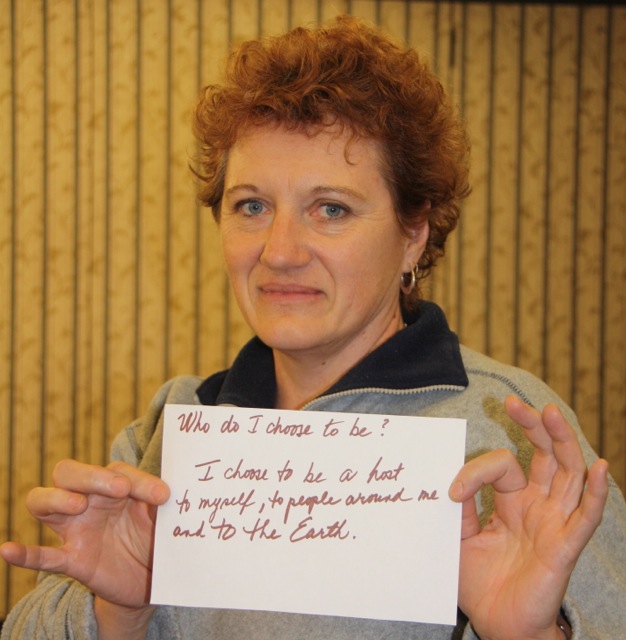
6. Move people toward real and doable action. Connection, storytelling, and learning are important building blocks, but to foster leadership in people, and to encourage real action to take place after they leave the session, it’s important to spend some time imagining what steps they can take to integrate the learning. In the Art of Hosting work, there’s a great process called Pro-Action Cafe in which individuals are invited to step forward with their ideas for projects, businesses, community action, etc., and they receive the gift of supportive conversation around their idea. At the end of our retreat, eight people walked away with more concrete ideas and networks that will support their work going forward. In addition to this, after watching a short Meg Wheatley video from the Women’s Leadership Kit, each person was invited to write their answer to the following question on a card: “Who do you choose to be for this world?”
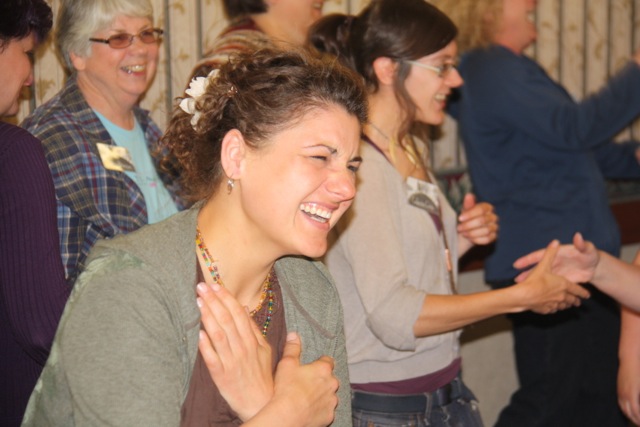 7. Plan fun into the agenda. This is pretty self-explanatory, and yet we sometimes forget to do it when we’re trying to cram a lot of meaningful content into our gatherings. People can’t integrate deep learning into their lives unless they have a chance to balance that depth with times of play and release. One of the women brought a large community drum to the gathering, and in the evening, she taught us some drum songs and some of us drummed while others danced. It is incredibly cathartic to pound a large community drum with as much vigour as she invited us to do! After the drum circle, we headed outside to huddle around the fire and share some deep belly laughs.
7. Plan fun into the agenda. This is pretty self-explanatory, and yet we sometimes forget to do it when we’re trying to cram a lot of meaningful content into our gatherings. People can’t integrate deep learning into their lives unless they have a chance to balance that depth with times of play and release. One of the women brought a large community drum to the gathering, and in the evening, she taught us some drum songs and some of us drummed while others danced. It is incredibly cathartic to pound a large community drum with as much vigour as she invited us to do! After the drum circle, we headed outside to huddle around the fire and share some deep belly laughs.
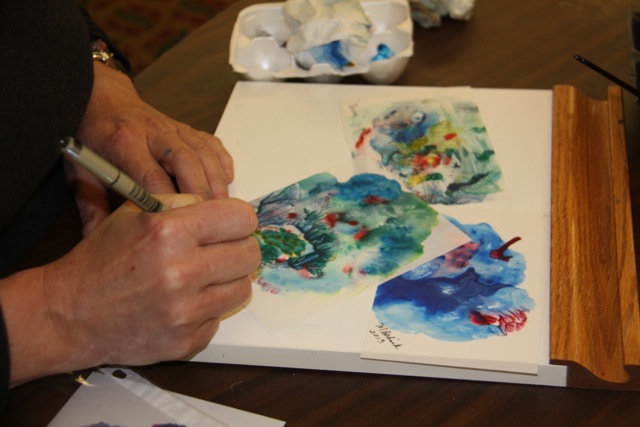
8. Give people something to do with their hands. I think it is especially true for women (and some men, but I don’t think it’s quite as universal) that we enjoy processing our thoughts and we have an easier time entering into conversation if we have something to keep our hands engaged. I’ve always encouraged people to doodle, because there’s good evidence that suggests that doodlers retain more information than non-doodlers. At this retreat (and others I’ve done), people were invited to work on quilt squares that represent Manitoba women’s stories. We’ll sew the pieces into a large quilt and it will make its way across our province, spending time in small town art galleries, coffee shops, and women’s resource centres.
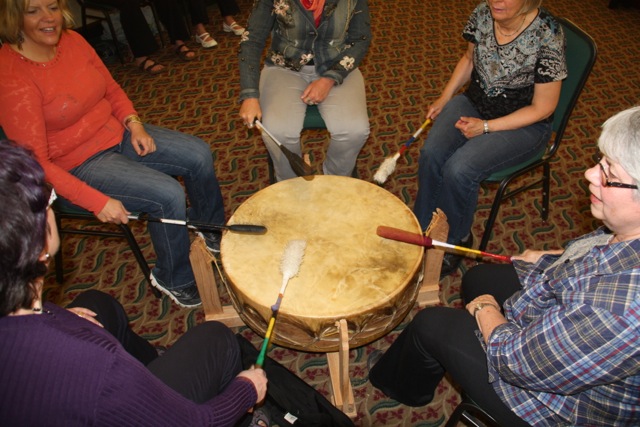
9. Remember the little things, but be prepared to let some of those little things go. I love to add little touches to retreats (like a colourful tablecloth on the table at the centre of the circle, a beautiful candle, decorated name tags, small gifts for participants, etc.), and I know they add special touches to the event, but I’ve also had to learn to let those little things go when they don’t work out the way I’d hoped. I’d hoped to offer childcare at this retreat (because UNPAC’s work is about removing barriers for women), but we stretched our budget too far and that didn’t work out. Also, I’d bought beaded bracelets to give everyone at the end, and then found those bracelets when we were cleaning up and most people had left for home. The childcare worked out in a way I hadn’t expected and I’m pretty sure nobody went home upset that they didn’t get a gift at the end.
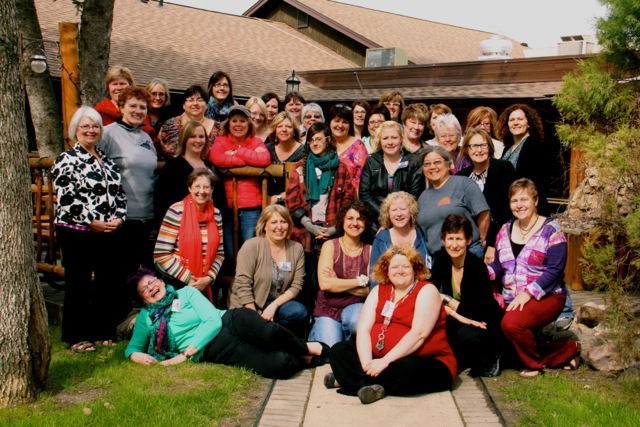
10. Trust that the right people will show up. This retreat filled up remarkably quickly with very little promotion, but it doesn’t always happen that way. Some of the things I’ve offered have been equally beautiful, but have only attracted a few people. It’s taken a fair amount of personal work, but I can honestly say that I’ve (mostly) learned to let go of my ego-attachment and expectations as far as numbers are concerned. If only a few people show up, they’re the right people. If lots of people show up, they’re the right people. This particular gathering attracted an amazing large circle of women and I can’t imagine a better combination of people sharing a weekend, but if only a handful had shown up, it could have been equally meaningful.
by Heather Plett | May 23, 2013 | Uncategorized

Last night, I was privileged to be present when Neda, a former participant in my Creative Discovery class and Horses & Mandalas workshop, launched her first poetry book, Neda: Whisperings of the Divine. Neda is the same person who gifted me with the beautiful prayer shawl mentioned in this post.
Neda is a 68 year old grandmother. She started writing poetry in 2007. She says that poems suddenly started pouring from her soul, even though she’d never been a writer before. They showed up because she was willing and open to try something new and to be a conduit of the Divine. I’ve witnessed her beautiful openness in class several times when she was willing to jump in and try things that were outside of her comfort zone. If you ever meet her, you should ask her to show you the beautiful journal cover she made in our class.
This morning, I had a conversation with my dear friend Diane. Diane just turned 70 and she’s also a grandmother. Diane and I met a few years ago in circle training with Christina Baldwin, and we co-hosted last summer’s Gather the Women gathering in Peterborough, Ontario. At the end of one of the days at Trent University last summer, Diane and I dove into the river in our clothes.
In this morning’s conversation, Diane wanted advice on the best (and simplest) technology to use for a new radio interview program she’s starting soon. She also wants to launch a new website and start offering some new wisdom sessions (that are kind of like coaching, but need a different word). Diane is on fire to do the work she feels called to in the world – hosting women in circle, teaching about spirituality and the feminine divine, and being a mentor to women like me who are in this work. By the end of the conversation, we’d dreamed up a new retreat we’ll be co-hosting this summer.
Not only do I feel blessed to have two such incredible women in my life, I feel humbled and inspired. These are women who aren’t afraid to do big, bold, creative things at a time in their lives when people might expect them to slow down. They’re not afraid to entertain the Muse, even when she shows up at unexpected times in their lives. They’re not afraid to say a big, open-hearted YES to life.
The next time you feel like too much time has passed in your life and it’s too late to do anything significant or creative or scary, think about Neda and Diane. Think about these beautiful, wild-hearted women, and dare to say YES!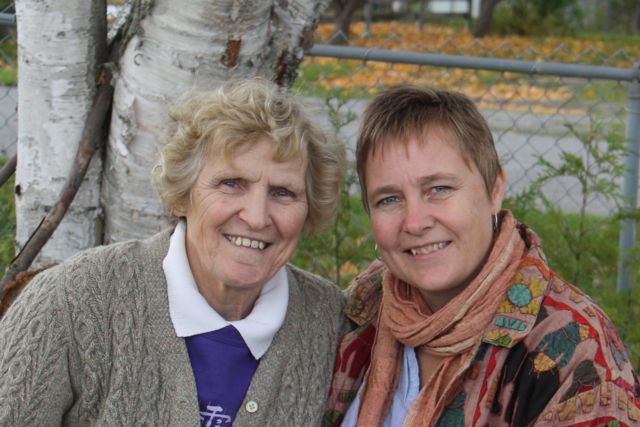
by Heather Plett | May 16, 2013 | Uncategorized
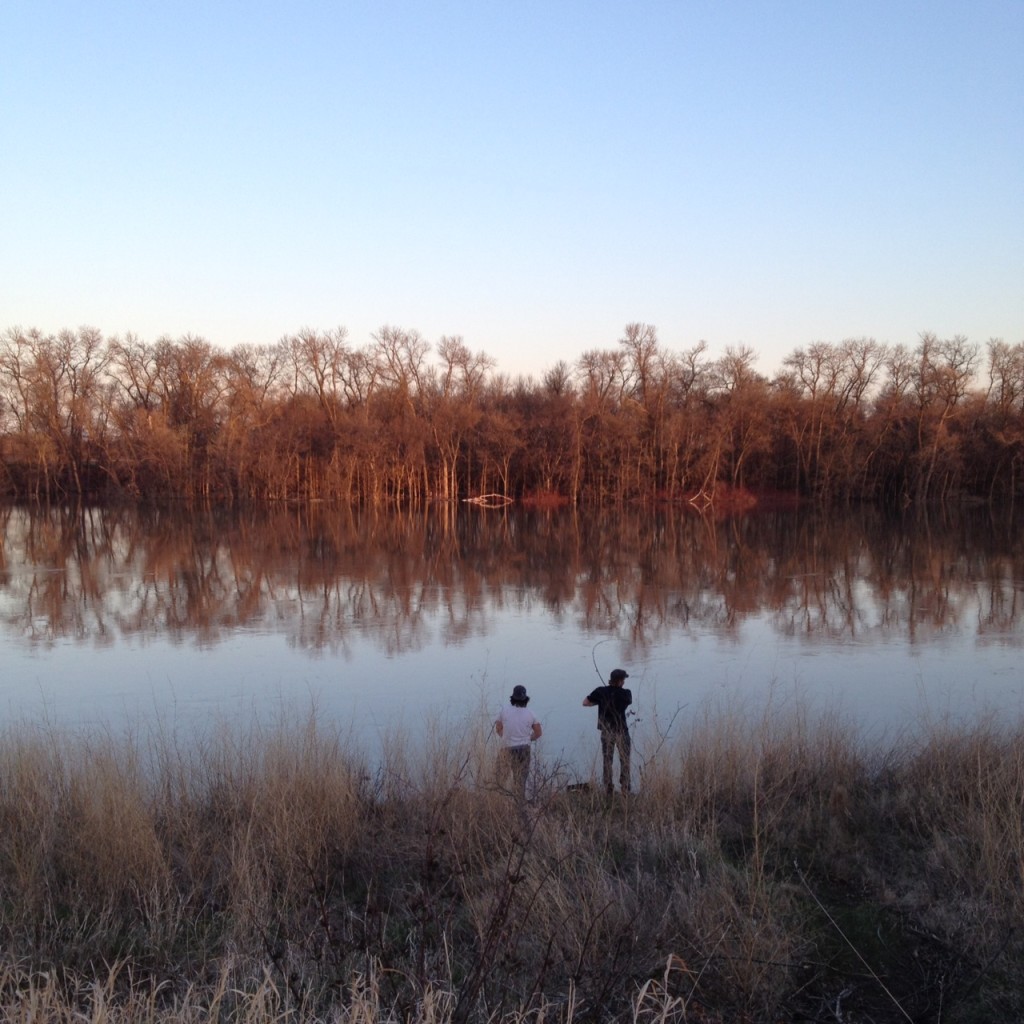
Three years ago, I read an article called Boys Don’t Cry, by Richard Rohr. Since then, I’ve been sharing it with nearly everyone I know who’s raising sons. The article speaks of the challenge men face in a patriarchal world…
After 20 years of working with men on retreats and rites of passage, in spiritual direction, and even in prison, it has sadly become clear to me how trapped the typical Western male feels. He is trapped inside, with almost no inner universe of deep meaning to heal him or guide him.
For centuries, males have been encouraged and rewarded for living an “outer” life of performances, which are usually framed in terms of win or lose. Just listen to boys talk—they have already imbibed it, and usually with the encouragement of both dad and mom. The world of sports, contests, American Idol, video games, and proving oneself is most males’ primary “myth,” through which he frames all reality.
Many news stories lately have demonstrated exactly what Rohr is talking about. Whether it’s the young men who raped Rehteah Parsons and the community that failed to support her, the owner of A&F who believes that girls need to be slim and boys need to be big and muscular, or the evangelical pastors who brag about their hot wives in leather pants, it’s clear that there are far too many men being raised with skewed views about what it means to be masculine.
Sadly, our young men are being socialized into a world that continues to believe that being masculine means that you have to dominate, you have to win in competition, you can’t show your fear or humanity, and you’re allowed to abuse other people now and then for your own gain.
Patriarchy has done as much harm to men as it’s done to women. In a world where boys don’t cry and the toughest football player is the biggest high school hero, young men grow up feeling shame over their weakness and their ordinary human feelings of fear and sadness. If they’re not as strong as society expects them to be, or if their interests are in the arts instead of sports and competition, they risk being labeled “gay” or “sissy”.
As this article suggests, men are in a “masculinity crisis” where their roles have changed, they’re pressured to live up to “pornified ideals”, they can’t show their emotions or be vulnerable, and they’re looked down on if they reach out for help.
In the three years since I read Richard Rohr’s article, there has been a question burning in the back of my mind… “how can we help the men?”
I do most of my work with women, and, in fact, my current byline is “helping women live and lead with courage, resilience, and authenticity”. I like working with women. It’s easy, it’s safe, and it feels like important work. There are few places I feel more content than when I’m in a circle of women sharing stories and being vulnerable. Women are socialized for this kind of thing – building relationships, sharing stories, and being vulnerable with each other. Next weekend, for example, I’ll be hosting a women’s leadership retreat for 35 women, and I know that I will come home inspired and energized.
It’s important work… but I know that there is still some work that is whispering in the corners of my mind that has yet to be realized.
How do we help the men?
Not long ago, I started a Facebook page called Women Changing Leadership about the need to bring more feminine wisdom into the way we lead. Although I love working from that platform… I’m wondering… how do we help men create a similar one called Men Changing Leadership? We don’t just need women working on this issue, we need men working on it.
Men are hurting too. I see it everywhere I turn. Men want to be able to live in full expression of who they are. They want to be allowed to be more vulnerable. They want to be able to cry without ridicule. They want to be able to build relationships that aren’t based on sports scores and fast cars. They want to be able to cultivate their inner lives in healthier ways than they’re encouraged to. They want to be taught how to handle their rage, their fear, and their sadness. They want to sit in conversation circles and share stories, just like women do.
In the public relations classes I teach, I occasionally invite the students into circle to have sharing time, especially when some conflict has arisen in the group. I find it interesting that it is often the young men in the class who come to me afterward to tell me that they really appreciated the opportunity to be in circle and share how they’re feeling. They aren’t given these opportunities very often. I am pleased that, for two years in a row, the students in this class have chosen to work on a group campaign that speaks out against violence toward women and raises money for a local women’s shelter. This year’s campaign, Stand Up Winnipeg is about encouraging men to be stand-up men who challenge the stereotype and dare to care about ending violence toward women. Though they may be socialized to be “tough guys”, the young men in my class give me hope that there are those who have the courage to be themselves.
A few years ago, I was at a retreat where a circle of women gathered at the side of a beautiful lake in Ontario to learn about circle and storytelling from our wise guide, Christina Baldwin. Throughout the time we were there, our conversation was frequently punctuated by gunshots across the lake. Apparently it was hunting season.
It was a stark picture of how the socialization of the genders had resulted in such different activities on either side of the lake. On one side, women brought their vulnerability, tears, and stories into circle. We even built a labyrinth out of dried leaves to represent our journey to our deeper spirituality. On the other side, meanwhile, men were working out their aggression through the sport of shooting birds. Possibly the only conversations going on were about their choices of weapons and how successful they’d been in the hung. (Yes, I’m making a generalization for the cause of this article. It is not my intention to offend anyone with this, but to open a conversation.)
At some point in the weekend, I found myself thinking, “how do I row out to the middle of the lake to meet with the men?” That thought hasn’t left me since, even though I make most of my living working with women.
I feel an ongoing tug to find a way to meet with more men, to invite them into circle, to listen to their stories, to give them safe space for their hurts, to help them challenge the stereotypes, and to encourage them to be vulnerable. That doesn’t mean that I want them to deny them their masculinity – far from it – I simply want to help them find a balance, a yin and yang of masculine and feminine. If they need to end the circle time with a rousing game of floor hockey, or go back to the other side of the lake to find a duck for supper, they can do that.
The question is… how? How do we help them? How do we make safe space and then convince them to step into the space? How do we let them know that we’re not judging them, but we want to support them? How do we invite them into meaningful conversation that will serve ALL of us? I ask it because I really want to know… men and women who read this, please share your thoughts in the comments so that we can start a conversation.
While I consider what more can be done, I’ll continue to do what I’m doing in my classroom and wherever people will welcome me. I’ll push the chairs into circle, I’ll invite men in (along with the women), and I’ll do what I can to host their longing and their pain.
And some day, as someone suggested recently, I may create a version of Lead with Your Wild Heart for men.
















